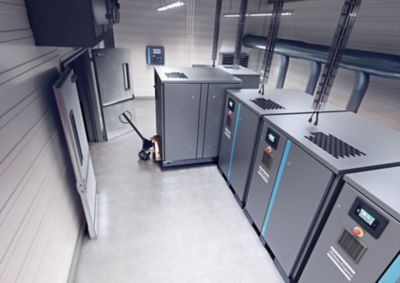January 9, 2025
Estimated reading time: 4 minutes
Did you know that moisture is always present in atmospheric air, even if we can’t see it? When the air is compressed in a compressed air system and is cooled beyond its dew point, it condenses into liquid water. This creates a conundrum, as compressed air systems rely on dry air and cannot perform their functions properly if the air is wet. More specifically, the air must not contain any liquid moisture and should be at a relative humidity of less than 50% to prevent corrosion.
Why moisture in compressed air is harmful?
Moisture in compressed air
- It can block control air lines, prevent instruments from reading or actuating properly, and result in general instrumentation malfunctions
- It can damage air tools by preventing proper lubrication
- It can cause water hammer events that damage equipment and piping
- It can cause product spoilage and negate product integrity
- Processes can be directly impacted when water enters from the air stream.
What dryer do I need for my compressor?
Our experts explain how to choose the right dryer for your air compressor.
How to remove moisture from compressed air?
There are five techniques for removing moisture from compressed air:
- Cooling plus separation is exactly how it sounds. The hot, compressed air is cooled, which allows a large amount of water to condense. Once the water is condensed it can then be separated from the air. This is typically completed via an aftercooler, or a heat exchanger that cools the hot compressed air in order to precipitate the water that would otherwise condense.
- Over-compression involves the compression of air to a higher pressure than the intended working pressure; after separation, the air is allowed to expand to the working pressure so it can be used in the intended process. Because this process is high-energy, over-compression is only suitable for very small air flow rates.
- Membrane drying uses the process of selective permeation of the gas components in the air to separate the water vapor out. As the filtered, wet compressed air enters the cylinder, water vapor permeates the membrane coating and collects on the fibers; meanwhile, the dry air continues through the fibers.
- Absorption drying is a chemical process in which water vapor is bound to an absorption material such as sodium chloride or sulfuric acid. The absorption material can be either a solid or a liquid and is much less common than other drying methods.
- Absorption drying involves the flow of moist air over a hygroscopic material or “desiccant” to be dried. Typical materials used are silica gel, molecular sieves and activated alumina, and include purge regenerated adsorption dryers, heated purge regenerated dryers, blower regenerated dryers, and heat of compression dryers.

